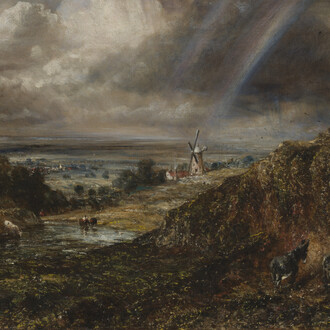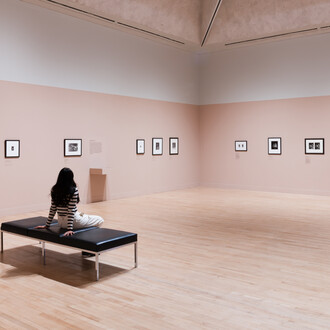John Martin (1789–1854) was a key figure in the nineteenth-century art world, renowned for his dramatic scenes of apocalyptic destruction and biblical catastrophe. Tate Britain’s major exhibition will be the largest display of his works seen in public since 1822. Bringing together his most famous paintings from collections around the world, as well as previously unseen and newly-restored works, the exhibition will reassess this singular figure in art history, and reveal the enduring influence of his apocalyptic art on painting, cinema and popular spectacle.
John Martin: Apocalypse at Tate Britain will chart the rise, fall and resurrection of a unique artistic reputation. Trained as a coach-painter in the North of England, Martin went on to create some of the nineteenth-century’s most widely exhibited works of art. The exhibition will showcase the full range of his most important oil paintings, including Belshazzar’s Feast 1820 (on loan from a private collection and not seen in public for over 20 years) and The Great Day of His Wrath 1851-3, which toured the world after his death, thrilling audiences from New York to Sydney with their painstaking detail and epic sense of scale and drama. His iconic mezzotint illustrations for The Bible and Milton’s Paradise Lost will also be on display, alongside his brilliant landscape watercolours. Martin’s profound scientific interests will be shown in his pioneering illustrations of dinosaurs, based on the latest fossil discoveries, and in his unrealised but visionary engineering projects, including plans for the embankment of the Thames and a metropolitan railway for London.
While his art was hugely popular, Martin remained something of an outsider, scorned by figures like John Ruskin and William Wordsworth and shunned by the Royal Academy. Instead, the theatrical drama and spectacle of his paintings earned him such fans as Charles Dickens, Edward Bulwer-Lytton and the Brontës, as well as Prince Albert and Leopold, King of the Belgians. His decision to show works at popular venues like Piccadilly’s Egyptian Hall meant that he engaged directly with a mass market rather than an academic elite. Featuring key loans from Musée du Louvre, Paris and National Gallery of Art, Washington, this exhibition will re-evaluate how Martin’s populism fits into the story of British art, and how his work connects with the culture of today.
John Martin was born in Northumberland in July 1789, where he trained with a coach painter. After moving to London in 1806 he worked as a painter on glass and ceramics and as a drawing teacher before embarking on a career as an imaginative artist. Although spurned by the British art establishment, he received awards in France and Belgium and his art was known around the world. Heavily engaged with his engineering speculations in the 1830s and 1840s, he continued to paint, creating some of his most original works at the very end of his life. He died on the Isle of Man in 1854.
The exhibition is part of the Great British Art Debate supported by The National Lottery through the Heritage Lottery Fund. It has been organised in partnership with the Laing, Newcastle, from where it will travel to the Millenium Galleries, Sheffield. The exhibition is curated at Tate Britain by Martin Myrone, Curator of 18th and 19th Century British Art, Tate Britain, with Anna Austen, Curatorial Assistant, Tate Britain. The exhibition will be accompanied by a richly illustrated catalogue by Tate Publishing.
















